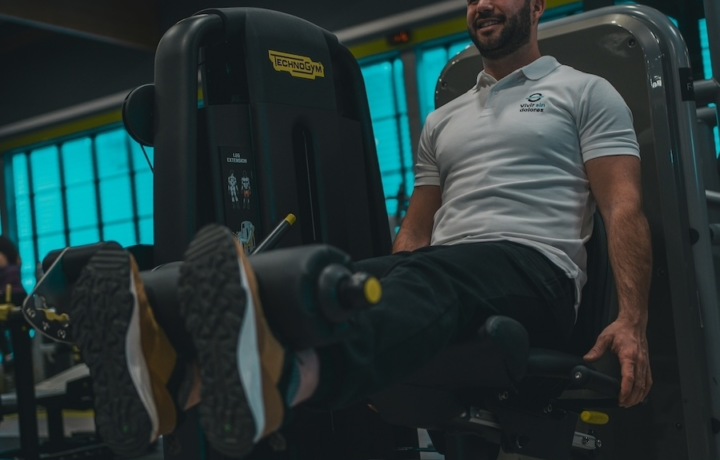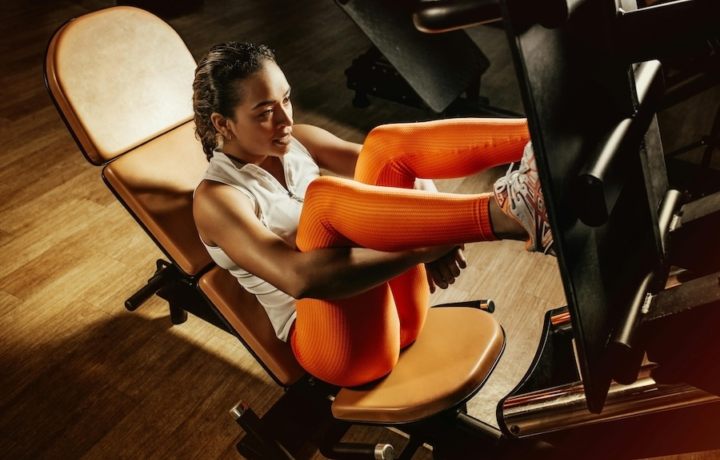Exercise
Kettlebell Step Up

Kettlebell Step Up
How to Perform
- Begin standing in front of a sturdy bench or step with your feet hip-width apart and a kettlebell held in your right hand at shoulder level in the rack position.
- Engage your core and maintain a tall, upright posture with your shoulders pulled back and down away from your ears.
- Place your right foot firmly on the center of the step, ensuring your entire foot is supported and stable.
- Drive through your right heel as you exhale, extending your right leg to lift your body up onto the step.
- Bring your left foot up to meet your right foot on top of the step, standing tall with both feet on the platform and your weight evenly distributed.
- Inhale as you step backward with your left foot, lowering it to the floor with control while maintaining your balance.
- Lower your right foot back to the starting position while keeping your torso upright and the kettlebell stable in the rack position.
- Complete all repetitions on one side before switching the kettlebell to the opposite hand and repeating the exercise with the other leg leading.
Important information
- Select a step height that allows your knee to bend at approximately 90 degrees when your foot is placed on top.
- Keep your chest lifted and spine neutral throughout the movement to avoid leaning forward excessively.
- Make sure the foot on the step is positioned fully on the surface to prevent ankle instability.
- If balance is an issue, place the kettlebell in the hand opposite to the stepping leg or use a lighter weight until stability improves.

Kettlebell Step Up
Exercise Details
Primary Muscles
Muscle Groups
Mechanic
Risk Areas
Built for progress
Take the guesswork out of training
Create personalized AI-powered workout plans that evolve with you. Train smarter, track every rep and keep moving forward, one workout at a time.






The Kettlebell Step Up stands as a powerful compound movement that elevates your lower body training to new heights. This intermediate exercise specifically targets multiple muscle groups simultaneously, with primary focus on your glutes, quads, and hamstrings – essentially engaging your entire posterior chain in one functional movement.
When incorporated into HIIT circuits, the Kettlebell Step Up drives your heart rate up rapidly, creating that perfect storm of strength and cardiovascular demand. Crossfit enthusiasts appreciate this exercise for its functional carryover to everyday movements and athletic performance, while bodybuilders value its ability to sculpt defined, balanced legs when performed with proper tempo and controlled form.
What makes this exercise particularly effective is its dual development of both strength and endurance. The weighted component challenges your muscles to generate force against resistance, building foundational lower body power. Meanwhile, the stepping motion, especially when performed for higher repetitions, builds muscular endurance that translates to improved stamina in various athletic pursuits and daily activities.
The beauty of the Kettlebell Step Up lies in its versatility. By adjusting step height, kettlebell weight, or tempo, you can shift the emphasis to align with specific training goals. This adaptability makes it suitable for nearly any fitness program, from rehabilitation to elite athletic training.
Beyond the physical benefits, this exercise develops proprioception, balance, and unilateral strength – addressing the common imbalances that plague many fitness enthusiasts. The functional nature of the movement pattern means you're training your body in ways that directly enhance your capability outside the gym, whether that's climbing stairs, hiking trails, or performing in your chosen sport.
When programmed correctly within your training regimen, the Kettlebell Step Up serves as a cornerstone movement that delivers impressive results in lower body aesthetics, functional strength, and overall athletic performance.
FAQ - Kettlebell Step Up
The Kettlebell Step Up primarily targets your quadriceps, glutes, and hamstrings, while also engaging your calves, core, and lower back as stabilizers. This compound movement effectively trains your entire posterior chain in one functional exercise.
For beginners, start with a step height that creates a 90-degree knee angle when your foot is placed on it (typically 12-16 inches). As you advance, you can increase the height to intensify the exercise, but avoid platforms so high that you need to push off your bottom foot or hunch forward.
Beginners should start with a lower step and lighter kettlebell (or bodyweight only), focusing on balance and form. Intermediate lifters can use moderate weights with higher steps, while advanced athletes can progress to heavier kettlebells, single-arm variations, or adding a knee drive at the top position.
The most common mistakes include rounding your lower back, rotating your hips instead of keeping them square, rushing through the movement, and not hinging properly at the hips. Focus on maintaining a neutral spine, moving with control, and keeping your standing knee slightly soft rather than locked.
Include Kettlebell Step Ups 1-2 times weekly, performing 3-4 sets of 8-12 reps per leg. Position them early in your workout after primary lifts but before isolation exercises. They work exceptionally well in lower body or full-body training days, and can be incorporated into HIIT circuits for added cardiovascular benefits.








